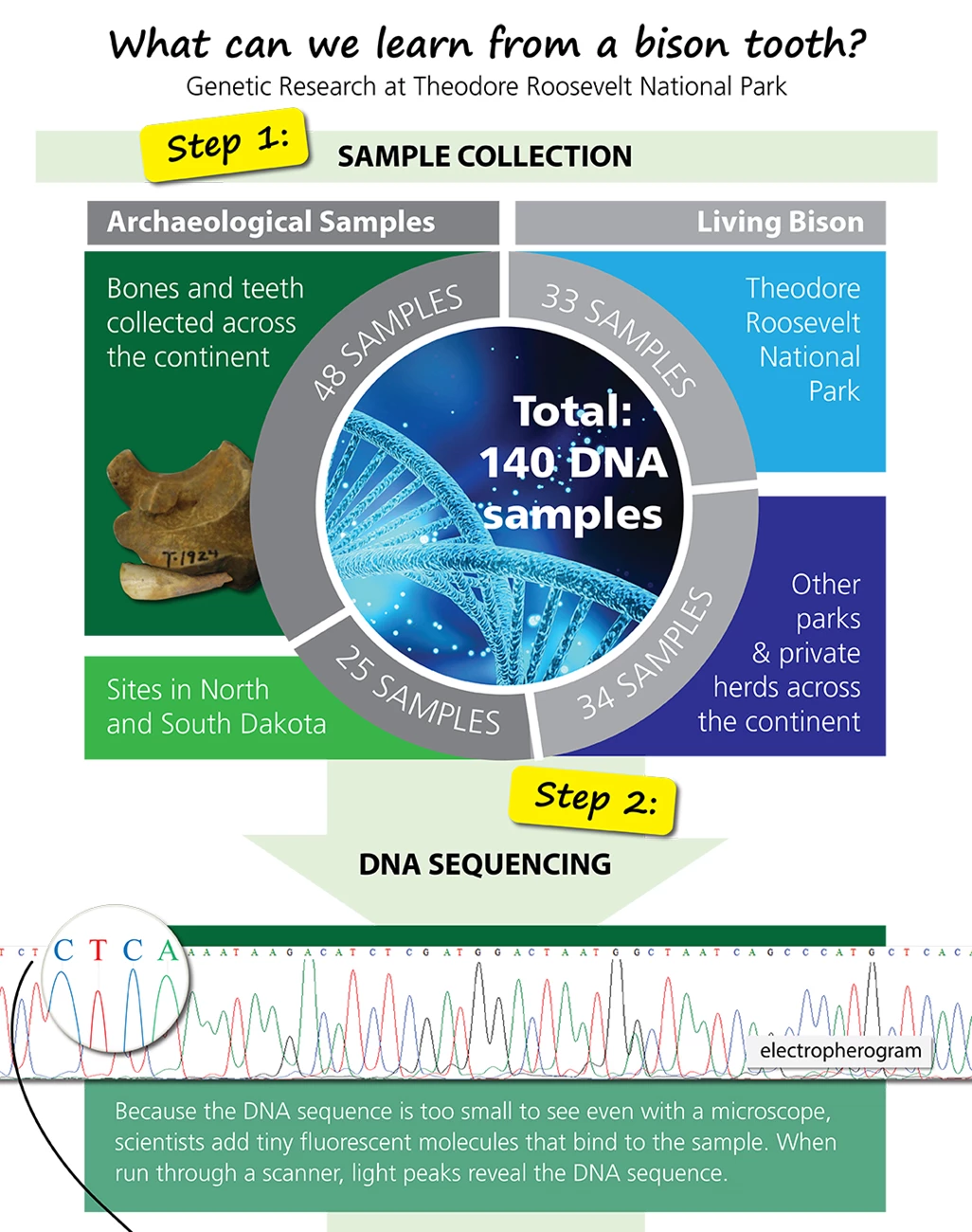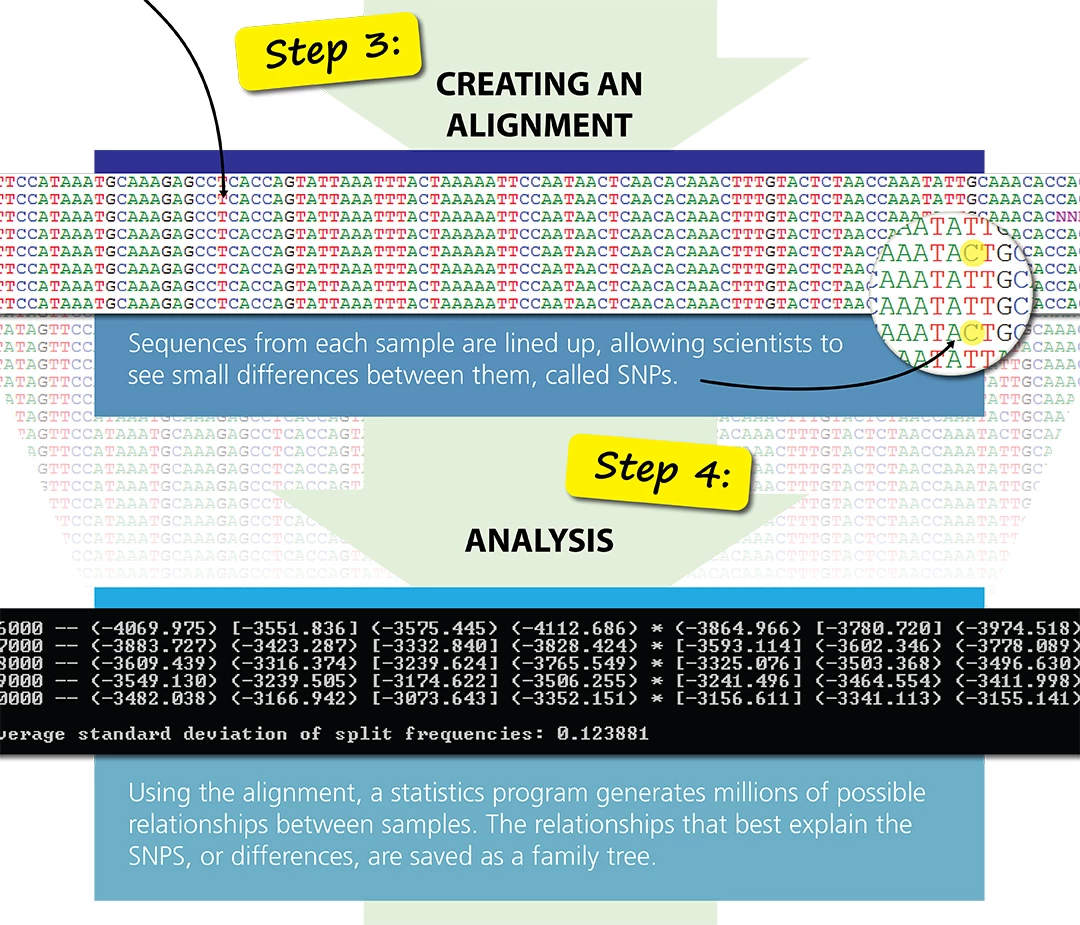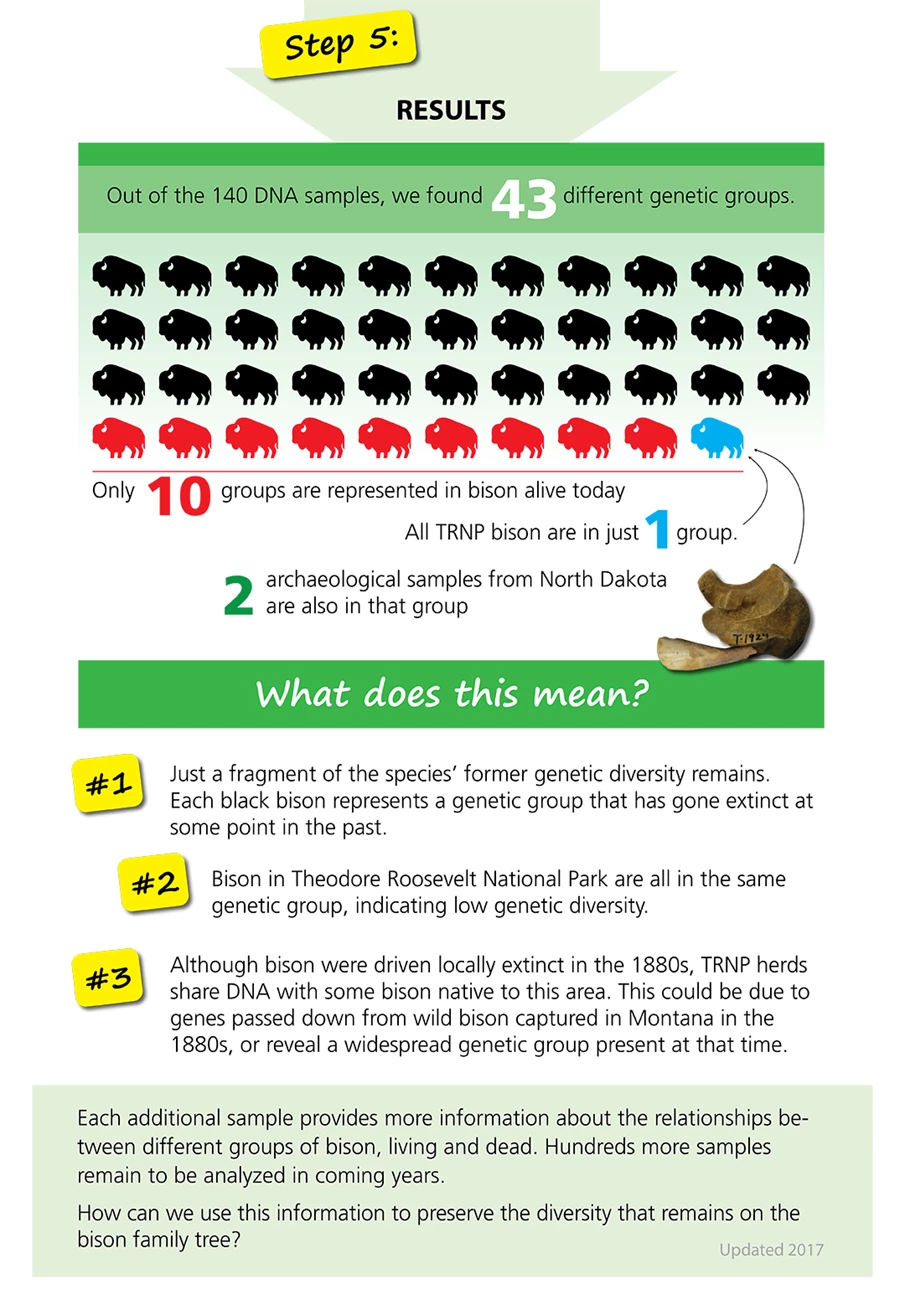


NPS / Hazel Galloway Return to the Bison BlogWhat can we learn from a bison tooth?
Genetic Research at Theodore Roosevelt National Park STEP 1: Sample Collection 48 archeological DNA samples came from bison bones and teeth collected from sites across North America. 25 archeological DNA samples were obtained from sites in North and South Dakota. 33 DNA samples were obtained from living bison in Theodore Roosevelt National Park and 34 DNA samples were obtained from living bison elsewhere across North America. In total, there were 140 samples collected. STEP 2: DNA Sequencing Because the DNA sequence is too small to see even with a microscope, scientists add tiny florescent molecules that bind to the sample. When run through a scanner, light peaks reveal the DNA sequence. STEP 3: Creating an Alignment Sequences from each sample are lined up, allowing scientists to see small difference between them, called SNPs. STEP 4: Analysis Using the alignment, a statistics program generates millions of possible relationships between samples. The relationships that best explain the SNPS, or differences, are saved as a family tree. STEP 5: Results Out of the 140 DNA samples, we found 43 different genetic groups. Only 10 groups are represented in bison alive today. All Theodore Roosevelt National Park bison are in just 1 group. Two archeological samples from North Dakota are also in that group. What does this mean? 1- Just a fragment of the species' former genetic diversity remains. Thirty-three of the 43 genetic groups found in the study have gone extinct. 2- Bison in Theodore Roosevelt National Park are all in the same genetic group, indicating low genetic diversity. 3- Although bison were driven locally extinct in the 1880s, Theodore Roosevelt National Park bison share DNA with soeme bison native to this area. This could be due to genes passed down from wild bison captured in Montana in the 1880s, or reveal a widespread genetic group present at that time. Each additional sample provides more information about the relationships between different groups of bison, living and dead. Hundreds more samples remain to be analyzed in coming years. How can we use this information to preserve the diversity that remains on the bison family tree? |
Last updated: April 25, 2018
